 Want a faster, better way to optimize your ads? Did you know that focusing on customers' emotions can help?
Want a faster, better way to optimize your ads? Did you know that focusing on customers' emotions can help?
To explore how to use emotional messaging to move people to action, I interview Talia Wolf.
More About This Show
The Social Media Marketing podcast is designed to help busy marketers, business owners, and creators discover what works with social media marketing.
In this episode, I interview Talia Wolf. She's the founder of GetUplift, an agency that specializes in conversion rate optimization for websites, landing pages, and advertisements. Her course is called Emotion Sells: The Masterclass.
Talia explains how to research customers' emotional connection to your product and why applying your findings improves conversions.
You'll also learn how to stand out with different types of ads, color psychology, and emotional imagery.
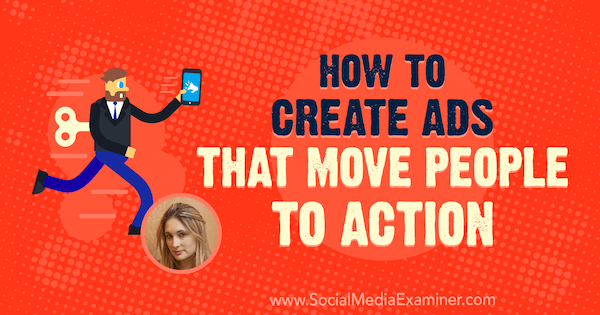
Share your feedback, read the show notes, and get the links mentioned in this episode below.
Listen Now
Where to subscribe: Apple Podcasts | Spotify | YouTube Music | YouTube | Amazon Music | RSS
Here are some of the things you'll discover in this show:
Emotion in Advertising
Talia's Story
In 2007, Talia got her start in conversion optimization by mistake. At a social media agency, she worked with big local brands that focused on likes, engagement, and comments. When she asked these brands about their goals for leads and sales, they rarely knew the answer. To help increase conversions, she changed the Facebook ads and landing pages, guessing what would work.
When Talia learned that an entire industry is devoted to optimizing ads, landing pages, websites, and funnels, she began finding out more about it. The more she learned, the more she loved it, which led to her starting a conversion optimization agency in 2010. For the first few years, she had to convince people to spend more money on optimizing current assets than on buying more ads and traffic.
Talia's struggles to prove her value and get results inspired her to abandon her intuitive approach to conversion optimization and develop a process based on emotion and psychology. The process quickly improved her results. Within weeks, her client conversions doubled, and some even improved tenfold. She also began attracting more clients.
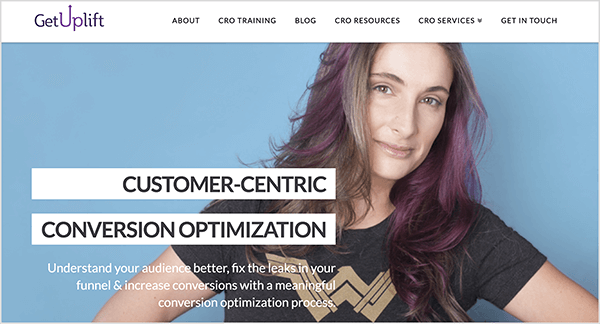
Today, Talia runs GetUplift and helps companies optimize their websites using emotion and psychology. She also teaches her process through her masterclass. Talia teaches how to identify your customers' emotions in order to understand why people buy from you. She also explains how to apply what you learn to increase conversions from ads, landing pages, and so on.
Get World-Class Marketing Training — All Year Long!
Are you facing doubt, uncertainty, or overwhelm? The Social Media Marketing Society can help.
Each month, you’ll receive training from trusted marketing experts, covering everything from AI to organic social marketing. When you join, you’ll also get immediate access to:
- A library of 100+ marketing trainings
- A community of like-minded marketers
- Monthly online community meetups
- Relevant news and trends updates
Listen to the show to hear how conversion rate optimization helped improve the sales page for Social Media Marketing World.
How Emotion Helps You Optimize for Conversions
Talia explains the benefits of focusing on customer emotions in order to optimize your ads and landing pages. First, you can save money and time. Because the customer-focused approach helps you find what works faster, you spend less money on testing and refining your ads.
Most companies spend a lot of money driving traffic to their website or landing pages. Often, they spend money changing their ads and targeting, and still don't get the desired results, so they just continue to throw more money at different target audiences. Or they might think of conversion optimization as changing a button or headline, or adding a few more bullets.
Talia says customer-centric conversion optimization is focused on understanding people on a deeper level than demographic details like gender, location, profession, income, devices they use, etc. Instead, you focus on the real challenges and pains that people coming to your website want to solve.
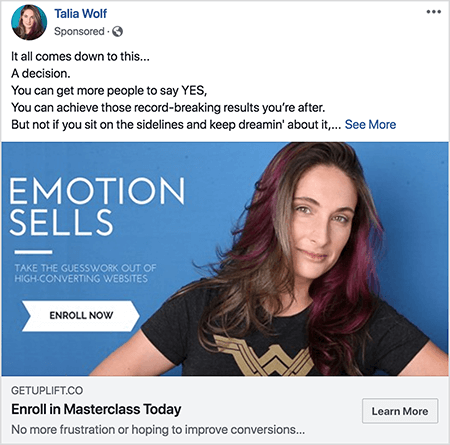
Common marketing tactics don't help customers understand how your product helps them. To visualize this, you're not focused on the customer when you change the color of a button or the way you explain your product's features and pricing. What does help is understanding customers' emotions, pains, hesitations, and concerns, and addressing those in your ads and landing pages.
Talia shares an example based on how people research their options. Imagine a customer in need of a solution opens several browser tabs to research a product. It could be a B2B product that solves a problem in their company or a B2C product for kids. As that customer jumps from one tab to the next, a web page stands out when it makes the customer feel understood.
Customer-centered optimization is all about getting your customer to say, “Whoa, this company gets me. This is exactly how I feel,” or “This is exactly what I've tried,” or “This is exactly what I'm looking for.” You want to evoke everything that the customer is feeling right now and wants to feel.
You can see an emotion-centered approach in ads from successful companies like Nike, LEGO, or Dove. Their ads don't center their products or feature talking points about how a shoe or shampoo is better. Their ads focus on the emotion of finding your inner self or becoming a better version of yourself. You don't need a big-brand budget to do this. Simply find the right message for your customer.
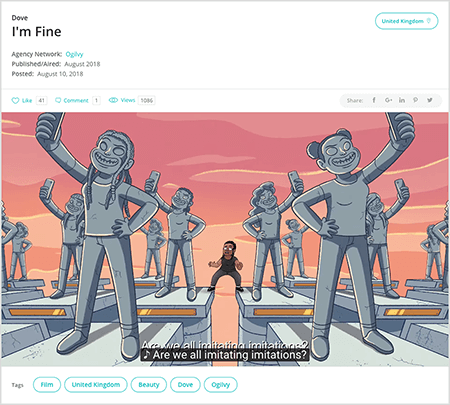
I mention that totally changing the messaging can be difficult. For Social Media Marketing World, I've been encouraging the marketing team to stop selling features and benefits (like 200 speakers, 120 sessions) and focus on the problem instead (such as “Be the hero at your company”). I've found that if the initial changes to the messaging don't work, it's tempting to return to the old way.
Talia says that's why research and data are important parts of her process. When you're trying to optimize something like a sales page, you need to support those changes with research and data. You may have a strong gut feeling, but your research and data help other people buy into your testing process.
Your first round of changes to your messaging doesn't always increase your conversions. However, the process will still help you understand your customers better and set you up for the next round of tests. Talia also understands that drastically changing your messaging is a huge leap. But emotion-based optimization can create a new normal with substantially higher conversions.

After you figure out how to address your customers' challenges and aspirations, you can benefit for many years to come, and revising your messaging in the future becomes easier. Also, focusing on customers and their emotions can change the way your whole company works.
To illustrate, you can share messages that work with your sales team and customer retention team. When a salesperson or customer care representative is working with a customer who has a specific pain point, knowing what messages resonate most can help make the sale or solve the customer's problem.
Listen to the show to hear how Talia's approach intersects with my experience as a copywriter.
Talia's Pillars for Emotion in Advertising
The process Talia developed is long, so she focuses on sharing some of the principles she teaches her clients and students. These include focusing on the customer, making customers feel your value, and running meaningful tests. These are the three pillars of her emotional targeting process.
Customer Focus: Focusing on the customer is mainly about understanding that you're not the hero of the story, your customer is. To focus on what they need, you need to stop talking about yourself and start talking about the customer's benefit.
An onsite customer survey is one of Talia's favorite ways to begin shifting to customer-focused messaging. Although many people are reluctant to run onsite surveys, you can target surveys to specific people. That's one way to target existing customers instead of prospects.
In the survey, ask questions that help you understand the specific moment that a problem happened in a customer's life and prompted them to search for a solution. Choose questions that focus less on the problem and more on the customer. Don't ask “Why did you choose us?” or “What is your issue?” You'll get responses like, “I have a communication problem with my distributed team.”
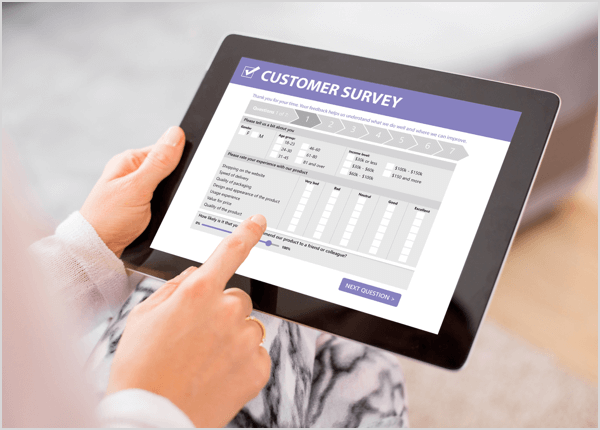
Instead, you want to ask, “What happened today that made you search for this solution?” With a question about what's going on in the customer's life, the answers are a bit richer. You hear answers such as, “My boss has been nagging me,” or “I'm really tired of trying to communicate with Fred in Australia and really need to start making sense of things.”
Talia also likes the question, “If I took away our product from you today, what would you miss most?” This question gets to the heart of people's emotional connection to your product or service. Customers typically don't miss technical things. They miss being comfortable and not needing to get up from the couch, warming up their house before they come in, or looking good to their manager.
If you don't want to do an onsite survey that pops up, try placing the survey on your thank-you page. When someone converts, taking that first action makes it more likely they'll take another action. With this tactic, you can ask customers one question, and you'll get a lot of answers.
Talia encourages people to choose that question carefully and avoid questions that speak to people's reasons for buying your product, signing up for your newsletter, and so on. Those questions don't elicit the answers you really want. Instead, ask a question like “Who is your role model?” The answers reflect their values, who they want to be, and what's the better version of themselves.
In the answers to these questions, you'll see patterns emerge. When you see many similar answers, you'll know how to write your ad copy. Your customers will tell you what to say.

Discover Proven Marketing Strategies and Tips
Want to go even deeper with your marketing? Check out the Social Media Marketing Podcast! Publishing weekly since 2012, the Social Media Marketing Podcast helps you navigate the constantly changing marketing jungle, with expert interviews from marketing pros.
But don’t let the name fool you. This show is about a lot more than just social media marketing. With over 600 episodes and millions of downloads each year, this show has been a trusted source for marketers for well over a decade.
Make People Feel Those Emotions: To emphasize the emotions you just researched, all of the elements on the page need to make people feel them and believe them. Words like, “We know you're experiencing this,” are one way to do this. In addition to the copy, you can use color psychology, images, and testimonials. The ad or page needs to totally resonate with your target audience.
When Apple launched its stores, many elements came together to create a sense of prestige. Apple never said outright that using an iPhone or an iPad made you better than other people. Apple made the customer feel it with the tables where you can try a product, the absence of cash registers, and all of the people there to help you if you need them. An Apple device was a status symbol.
Similarly, Nike doesn't talk about their shoes or other products, but about finding your greatness. Anyone can wear Nike shoes and go running. They make you feel like no matter your weight, gender, where you're from, or what you're doing in your life, you can find your greatness by doing sports.
LEGO is Talia's favorite example of a brand that makes people feel certain emotions. LEGO ads don't talk about building a castle, a car, or a tower. They talk about how the kids who play with LEGOs are more confident and happier. They have a better future because they're filled with pride and fun. As a parent, you're like, “Heck yeah, I want that for my kids. Bring me some LEGOs.”

Run Meaningful Tests: After you discover what emotions matter to your customers and decide how to show them on page, you need to run meaningful tests. You're not just testing a different call to action, button, or headline. Meaningful tests tell you something about your customers, their emotions, and what motivates them most. Even if the test fails, you learn something.
Listen to the show to hear Talia and me discuss Hotjar, a tool for surveying your website visitors.
How to Create Connection in Your Ads
Talia explains how to apply these pillars to advertising. Your ads are the first part of the conversion process: they send people to your website or landing page. The second part is to close the sale.
To optimize social media advertisements, they need to stand out in the news feed and create an emotional connection with the right crowd. This is a challenge because we see between 4,000 and 10,000 messages per day. These messages include ads as well as tweets, emails, calls, and text messages. We're constantly being bombarded with content.
Before and After Ads: You begin connecting with people at the top of the funnel. Specifically, you start selling by resonating with people's emotions in the first ad they see on Facebook, Instagram, or anywhere on social media. With this approach, everything further down the funnel becomes much easier.
Typically, an eCommerce ad shows the image of the product, a discount, and a testimonial like “It's such a gorgeous dress.” Instead, Talia likes to use the copy to tell a story. Also, based on what customers care about and their pain, she likes to run two ads: a before ad and an after ad.
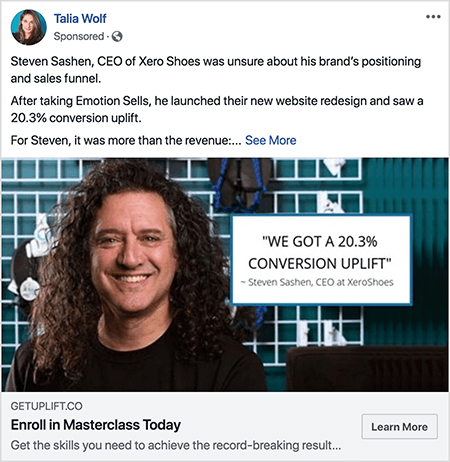
In the before ad, you tell a story about what people are feeling right now—their struggles, their pain, the thing that's holding them back. Although many people believe you're not supposed to write a lot of copy because people don't read it, Talia says that's incorrect. If you give people a reason to read, they'll read. Her highest-converting Facebook ads sometimes have 200 words.
In the before ad, a good story acknowledges that people are feeling a certain way, tells them a solution exists, and invites them to explore that solution with you. All of the feelings you address are the ones you identified in your survey.
The after ad conveys what people want to feel after they try this solution. If the before ad is about feeling lonely, the after ad talks about becoming part of a bigger community. If the before ad is about feeling unappreciated, the after ad might talk about the ways managers appreciate people who have used this solution by giving them awards.
Your before and after ads also use images and testimonials to support the emotion you want to convey. In the before ad, an image or testimonial can tease the idea that your product or service is the solution. Avoid directly saying, “This product is going to make you this way.” Instead, if someone feels lonely in their profession, an image or testimonial can tease how your product is life-changing.
In the after ad (building off of the previous example), the story might be about being around people who get you, and imagining yourself connecting with people via this product. You can do this with video, images, or however you choose. The important thing is to make your story and images about the prospect's desired outcome (not your own). This Nike shoes ad shows an image of the runner customers want to be.
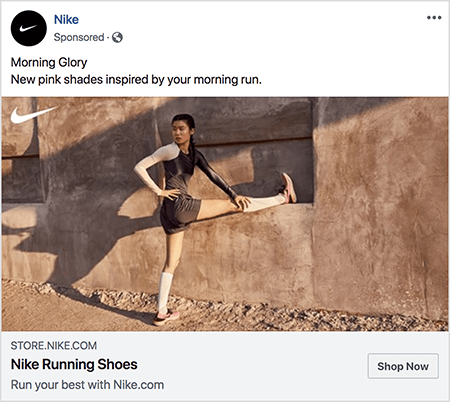
Color Psychology: Talia uses a lot of color psychology on her landing pages and websites, and a little with her ads, too. A common misconception is that every color has just one emotion. You can find articles and infographics that say blue means trust, green means fresh, and red means anger. Talia finds that colors have an emotional effect on us, but they don't work alone.
Essentially, color psychology is about grabbing people's attention. Thinking about how colors work together can be difficult if you're using a product photo. However, in an illustration or animation, you can explore how different colors evoke the emotions you want to highlight.
When you think about how colors work together, you need to know your audience well. The emotional message of colors varies depending on a person's gender, age, and culture. In Western cultures, white is the wedding theme. But in parts of Asia, white is the color of mourning, and a bride would wear red.
Images: Talia doesn't like to use images of products and services, such as an image of a mobile app or a desktop with a picture of what the company does. She prefers images that portray raw, actual emotion, like this Slack ad that depicts the feeling of successful collaboration. You can use an image of people, a background, or anything that highlights those emotions.

For an eCommerce site that sells a product such as a dress, show someone wearing it in a specific place for a specific reason. You want to show not only the product but the outcome of using it. If someone might buy the dress for a dream date, you can show the feeling of those dreams coming true at a party or during a moonlight walk.
When you're selling services, the images similarly need to portray those before and after feelings.
Listen to the show to hear how I might apply Talia's ideas to selling Social Media Marketing World.
Discovery of the Week
Clipping Magic is a browser-based tool that removes image backgrounds.
Clipping Magic has the intelligence to find the edges of objects, including their shadows. Compared to tools like Photoshop, Clipping Magic is easy to learn and quick to use. After uploading your image, you mark the object you want to keep or remove with a green marker built into the tool. Your marking doesn't have to be incredibly accurate. The tool makes the area it removes transparent.
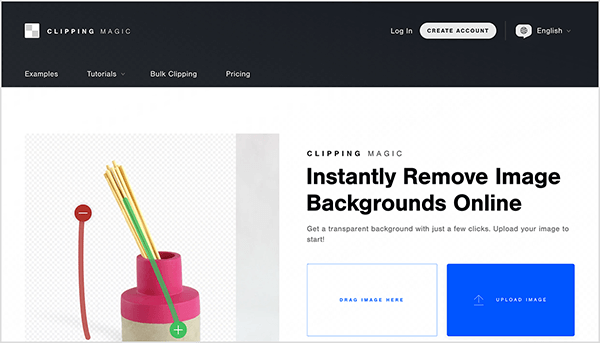
In addition to removing backgrounds, Clipping Magic lets you adjust the colors, add a drop shadow, and crop the photo.
Clipping Magic might be especially useful for marketers who need product images for their social posts, or different images for their website or Facebook Marketplace. On the website, you can find demos of different ways to use it.
Clipping Magic offers monthly subscriptions starting at $3.99 for 15 images. If you don't use all of your images each month, your image allotment rolls over, and you can accumulate up to 75 image credits.
Listen to the show to learn more and let us know how Clipping Magic works for you.
Key takeaways mentioned in this episode:
- Visit Talia's website to learn more about her consultancy.
- Check out Talia's free resources, including her free color psychology guide and 100 psychological triggers you can use in marketing.
- Learn more about Talia's course, Emotion Sells: The Masterclass.
- Follow Talia on Twitter.
- See how companies like Nike, LEGO, or Dove use an emotion-centered approach in their ads.
- Discover how Hotjar helps you survey website visitors.
- Remove image backgrounds with Clipping Magic.
- Tune into The Journey, our video documentary.
- Watch our weekly Social Media Marketing Talk Show on Fridays at 10 AM Pacific on Crowdcast or tune in on Facebook Live.
- Download the 2018 Social Media Marketing Industry Report.
- Learn more about Social Media Marketing World 2019.
Help Us Spread the Word! Please let your Twitter followers know about this podcast. Simply click here now to post a tweet.
If you enjoyed this episode of the Social Media Marketing podcast, please head over to iTunes, leave a rating, write a review, and subscribe. And if you listen on Stitcher, please click here to rate and review this show.
What do you think? What are your thoughts on emotion in advertising? Please share your comments below.
Attention Agency Owners, Brand Marketers, and Consultants

Introducing the Marketing Agency Show–our newest podcast designed to explore the struggles of agency marketers.
Join show host and agency owner, Brooke Sellas, as she interviews agency marketers and digs deep into their biggest challenges. Explore topics like navigating rough economic times, leveraging AI, service diversification, client acquisition, and much more.
Just pull up your favorite podcast app, search for Marketing Agency Show and start listening. Or click the button below for more information.

